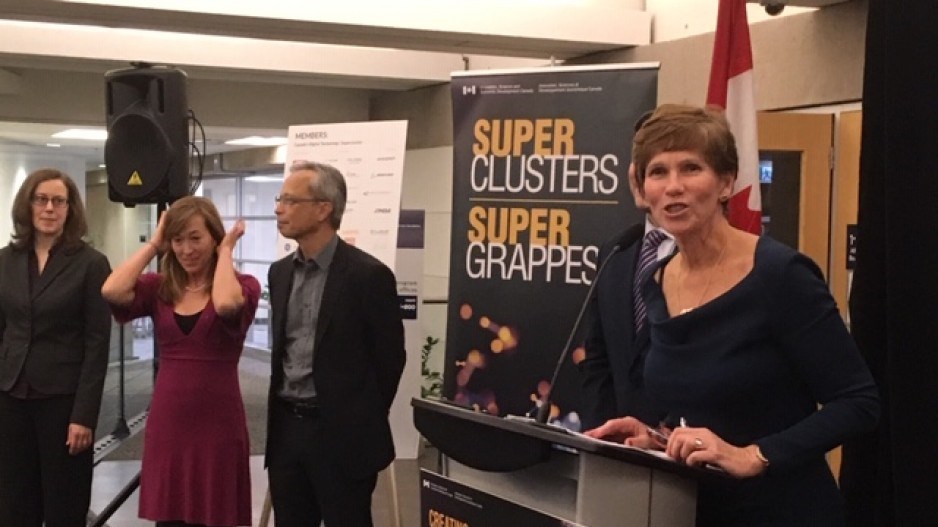The federal government will match up to $153 million in funding over five years for the B.C.-based Digital Technology Supercluster (DTS).
Marco Mendicino, Parliamentary Secretary to the Minister of Infrastructure and Communities, told BIV after making the announcement that Ottawa’s commitment speaks to Vancouver’s position as a “hotbed of economic” innovation.
The federal government is committing $950 million total to the national supercluster program, which aims to create public-private partnerships in regions with business activity primed for collaboration.
A November 2017 executive summary estimated that DTS participants could eventually invest $1.4 billion to fund 100 collaborations involving 1,000 organizations over a decade.
Earlier this month Ottawa committed $153 million to the Ocean Supercluster based in Atlantic Canada and another $153 million to the Protein Industries Supercluster in the Prairies.
That leaves $491 million left to be divvied up between the SCALE.AI Supercluster in Quebec and the Advanced Manufacturing Supercluster in Ontario.
“We look at the merits of the initiative and the supercluster and we want to make sure that everyone’s getting a good share of the overall investment,” Mendicino said.
“But we’re confident that with the $153 million matched by the private sector we’re going to see the kind of growth that we know Vancouver and the surrounding region’s capable of.”
Sue Paish, CEO of the DTS, said on top of Ottawa’s $153 million her organization has secured commitments worth “more than” $200 million from the partners that have joined.
“What the federal funding does is it allows us to leverage the private sector funding,” she told BIV.
“So for every dollar that a private sector organization invests in a project, we will match that up to 75 cents.”
Paish said she couldn’t forecast whether a larger commitment from the federal government would have stoked further investment from private partners.
“My crystal ball’s just not that good,” she said.
“What I can say is what has happened: in that a space of six months we have over 500 organizations involved in the supercluster.”
Paish added that members have already begun work on seven projects over the past six months.
“I firmly believe that it will be so successful that … it will be irresistible for [the] private and public sector to not continue to fund and expand the success that we’re going to build,” she said.
Telus Corp. (TSX:T), Microsoft Corp. (Nasdaq:MSFT) and the University of British Columbia were among the 60 organizations that participated in the initial bid for funding in 2017.
The number of DTS participants has since ballooned to 571 over the past 18 months, more than doubling since 260 organizations were involved at the start of the year.
Paish said that of the more than $200 million committed from private partners, 35% of that split has come from small- or medium-sized enterprise (SME), 55% has come from large corporations and the remaining 10% from post-secondary institutions.
Participants are required to make investments in collaborative projects pitched to the DTS. Each project must include a minimum of three organizations, at least one of which must be a SME.
Updated with additional comments from Paish and Mendicino, as well as additional background information on the supercluster initiative




